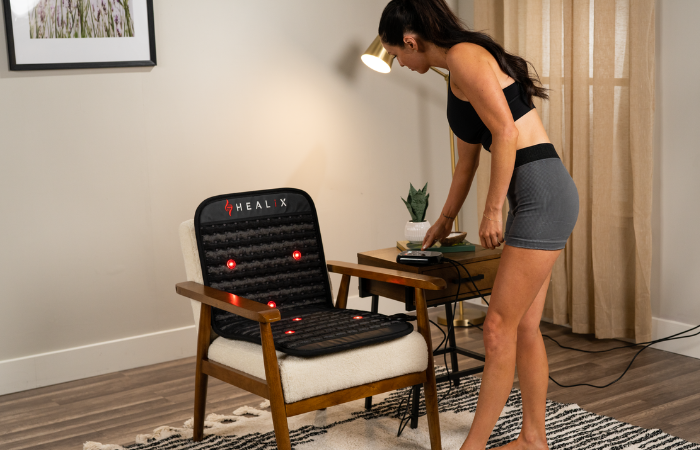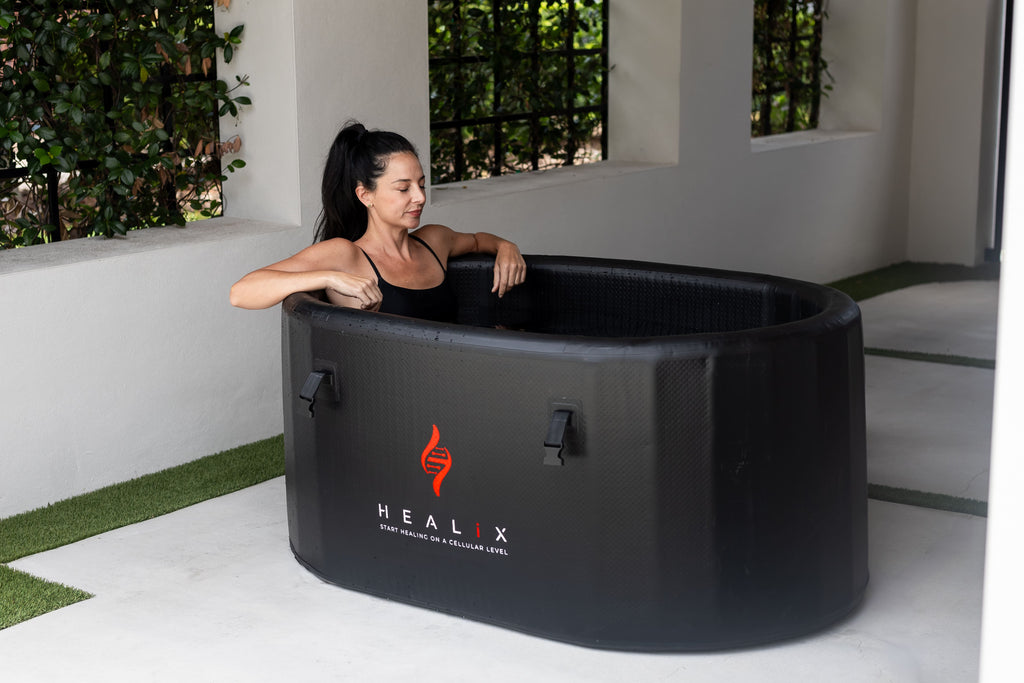Don't Listen To The Internet - You CAN Detox In Saunas: Here's How
Here Is The Proof That You Can Detox And Vastly Improve Your Health With Sauna

July 21st, 2021 | Infrared Tech
If you do a quick Google search about infrared saunas and detox, you’ll likely come across an article or two claiming that saunas don’t help detoxify the body.
We’re Here to Tell You: Don’t Believe Everything on the Internet.
It doesn’t take a deep dive into research to see that natural detoxification can be accelerated by both infrared sauna use and sweating in general.
Stick with us—we’ll give you a simple explanation, along with medical journal sources that confirm our statement and (unsurprisingly) debunk the claims circulating online. We’re going to address three major myths contributing to the misinformation and provide legitimate sources so you can verify the facts for yourself!
You Cannot Detox with an Infrared Sauna: FALSE
Let’s start with the one that bothers us the most: You can detox through perspiration—contrary to what some may claim. Some studies suggest that perspiration may be the most accurate indicator of which toxins your body is holding⁶. Below is a broad list of the different types of toxins that have been found leaving the body through sweat:
1. Heavy Metals
In Particular, Arsenic, Cadmium, Lead, and Mercury. Research shows that sauna use may help normalize mercury levels⁷! These toxins can cause kidney damage, bone density issues, cancer, and neurological complications¹².
2. Petrochemicals
Also known as the building blocks of plastics. Most people are familiar with BPAs, which fall under this group⁸. According to a study published in the Journal of Environmental Public Health, BPA has been detected in sweat—supporting the idea that these toxins can be mobilized and excreted through perspiration. They can accumulate in body tissues, organs, and the brain, making their impact cumulative. The most common issues linked to this group of toxins include hormone disorders, cancer, and organ damage.
3. Pesticides
The list of types is extensive, and the government is constantly rotating through the flavor of the month as to what is “least” toxic. The effects can be delayed by years, cumulative and severe. As noted in a study from BioMed Research International, these toxins are excreted through sweat, highlighting the role of sauna use in supporting detoxification⁹. They are linked to things like cancer, tumor formation, and nervous system damage.
4. Molds
Along with various other mycotoxins, these toxins can be found in common foods like cereals, coffee beans, spices, and dried vine fruits. According to a review published in The Scientific World Journal, exposure to molds and mycotoxins has been linked to kidney issues and compromised immune function¹⁰.
Boost Natural Detox Pathways
Many people cite that the body naturally detoxes itself—and that’s true! The liver and kidneys are extraordinary organs that help filter out harmful substances from the body. From alcohol to cellular waste, they are highly efficient at performing their designed functions. The human body is truly remarkable and resilient.
But that doesn’t mean it can’t be supported or enhanced to perform at its best.
One way sauna therapy supports these natural detox pathways is by increasing blood flow⁵ (this resource is one of many that highlights this benefit). Sauna use also dilates blood vessels, allowing more oxygen to circulate. Together, these effects help vital organs function optimally and assist detox organs—like the liver and kidneys—in eliminating waste and toxins more efficiently.
Traditional Sauna
To understand this claim, we first need to understand how a traditional sauna works compared to an infrared sauna. Steam saunas and rock saunas rely on high ambient temperatures—meaning the air around you is heated so intensely that your body begins to sweat as a natural cooling response. Because this process depends on heating the outermost layers of the body, the impact is primarily superficial. That’s not to say traditional saunas don’t offer health benefits—the mechanism by which they work is simply different.

Infrared Sauna
Unlike traditional saunas, infrared saunas do not rely on heating the surrounding air to produce results. That’s why they often operate at lower temperatures. Infrared is actually a form of light energy, but because Infrared Light wavelengths are invisible to the human eye, we perceive them as heat.
This energy travels through the superficial layers of the body and is absorbed directly by the cells. As noted in a study published in Photonics & Lasers in Medicine, once absorbed, it raises the internal temperature of the cells, which then increases the body’s core temperature¹⁰. This is why we often describe infrared therapy as “healing at a cellular level.”
So when you see this claim, the way it should really be worded is, “Infrared Sauna Creates Sweat From A Deeper Level In The Body”.
Sauna Is Relaxing, But Not Healing: FALSE
This one might be the most confusing—because relaxing, in and of itself, is healing for the body. When the body and mind relax, they actually help regulate a few key hormones and neurotransmitters that directly impact your wellness and longevity. Let’s look at three of the most important ones:
Cortisol
This is one of the most critical hormones in the body, yet it often doesn’t get the attention it deserves. Cortisol plays a vital role in your overall vitality. While it serves an important purpose, many people today are overproducing cortisol due to chronic stress.
Excess cortisol is associated with poor insulin response, elevated blood glucose levels, high blood pressure, inflammation, increased cravings for comfort foods, decreased bone density, heart disease, and fat storage—particularly in the abdominal region. As detailed in a study published in the European Journal of Pharmacology¹, the list goes on. It’s not good, and relaxation helps slow its production. So if sauna helps you relax, then yes, it’s healing your body too. You can read more about what cortisol is and how to reduce it here.
Oxytocin
You might know it as the “feel-good” chemical, or the neurotransmitter associated with a “natural high,”… and it does create these feelings of euphoria. Sauna sessions can help boost oxytocin levels during and even after, especially if followed by a cool shower. According to a review published in Endocrine Reviews, oxytocin is linked to benefits such as weight loss. It is anabolic—promoting muscle growth, discouraging fat storage, increasing bone density, and enhancing lean body mass².
One of our favorite effects, though? The reduction of inflammation, particularly in the brain and intestines. According to a study published in the Journal of Neuroinflammation³, oxytocin has been shown to inhibit inflammation in microglial cells and reduce overall microglial activation. This is important because brain inflammation is increasingly being linked to diseases like Alzheimer’s, while reducing gut inflammation is a well-established way to support immune function.
Heat Shock Proteins
This is just cool science stuff, and it’s far from the first time we have brought this topic up. Heat shock proteins are a natural phenomenon found in many different types of life, from animals to plants.
To summarize: Heat shock proteins are produced when your core body temperature rises slightly. Once the heat stimulus is removed, your body generates these proteins, which play a key role in cellular repair. According to a study published in Biochemical Society Transactions, heat shock proteins such as HSF1 and Hsp90 have been shown to help repair faulty DNA transcription⁴—essentially fixing the very process that can lead to cellular damage, poor health, and aging.
For more on how infrared sessions aid restful sleep and recovery, check out: 5 Ways Far Infrared Therapy Enhances Sleep Cycles and Promotes Relaxation.
To Sum It up...
Next time you have someone try to convince you that your sauna sessions aren’t actually helping you become healthier, you now have the knowledge to help spread this good news… and even the medical journals to back it up.
For further reading, check out our related articles:
Harnessing the Power of Far Infrared Therapy for Detoxification and Wellness
References
1. McEwen BS. Central effects of stress hormones in health and disease: understanding the protective and damaging effects of stress and stress mediators. Eur J Pharmacol. 2008;583(2–3):174–185. https://doi.org/10.1016/j.ejphar.2007.11.071
2. McCormack SE, Blevins JE, Lawson EA. Metabolic effects of oxytocin. Endocr Rev. 2020;41(2):121–145. https://doi.org/10.1210/endrev/bnz012
3. Yuan L, Liu S, Bai X, et al. Oxytocin inhibits lipopolysaccharide-induced inflammation in microglial cells and attenuates microglial activation in lipopolysaccharide-treated mice. J Neuroinflammation. 2016;13(1):77. https://doi.org/10.1186/s12974-016-0541-7
4. Mazaira GI, Daneri-Becerra C, Zgajnar NR, et al. Gene expression regulation by heat-shock proteins: the cardinal roles of HSF1 and Hsp90. Biochem Soc Trans. 2018;46(1):51–65. https://doi.org/10.1042/BST20170335
5. Matienzo D, Bordoni B. Anatomy, blood flow. [Updated 2021 Jul 31]. In: StatPearls [Internet]. Treasure Island (FL): StatPearls Publishing; 2021 Jan–. Available from: https://www.ncbi.nlm.nih.gov/books/NBK554457/
6. Genuis SJ, Birkholz D, Rodushkin I, Beesoon S. Blood, urine, and sweat (BUS) study: monitoring and elimination of bioaccumulated toxic elements. Arch Environ Contam Toxicol. 2011;61(2):344–357. https://doi.org/10.1007/s00244-010-9611-5
7. Sears ME, Kerr KJ, Bray RI, et al. Arsenic, cadmium, lead, and mercury in sweat: a systematic review. J Environ Public Health. 2012;2012:184745. https://doi.org/10.1155/2012/184745
8. Genuis SJ, Beesoon S, Birkholz D, Lobo RA. Human excretion of bisphenol A: blood, urine, and sweat (BUS) study. J Environ Public Health. 2012;2012:185731. https://doi.org/10.1155/2012/185731
9. Genuis SJ, Beesoon S, Birkholz D, Lobo RA. Human elimination of organochlorine pesticides: blood, urine, and sweat study. Biomed Res Int. 2016;2016:1624643. https://doi.org/10.1155/2016/1624643
10. Vatansever F, Hamblin MR. Far infrared radiation (FIR): its biological effects and medical applications. Photonics Lasers Med. 2012;4(4):255–266. https://doi.org/10.1515/plm-2012-0034
11. Hope J. A review of the mechanism of injury and treatment approaches for illness resulting from exposure to water-damaged buildings, mold, and mycotoxins. ScientificWorldJournal. 2013;2013:767482. https://doi.org/10.1155/2013/767482
12. Järup L. Hazards of heavy metal contamination. Br Med Bull. 2003;68:167–182. https://doi.org/10.1093/bmb/ldg032



